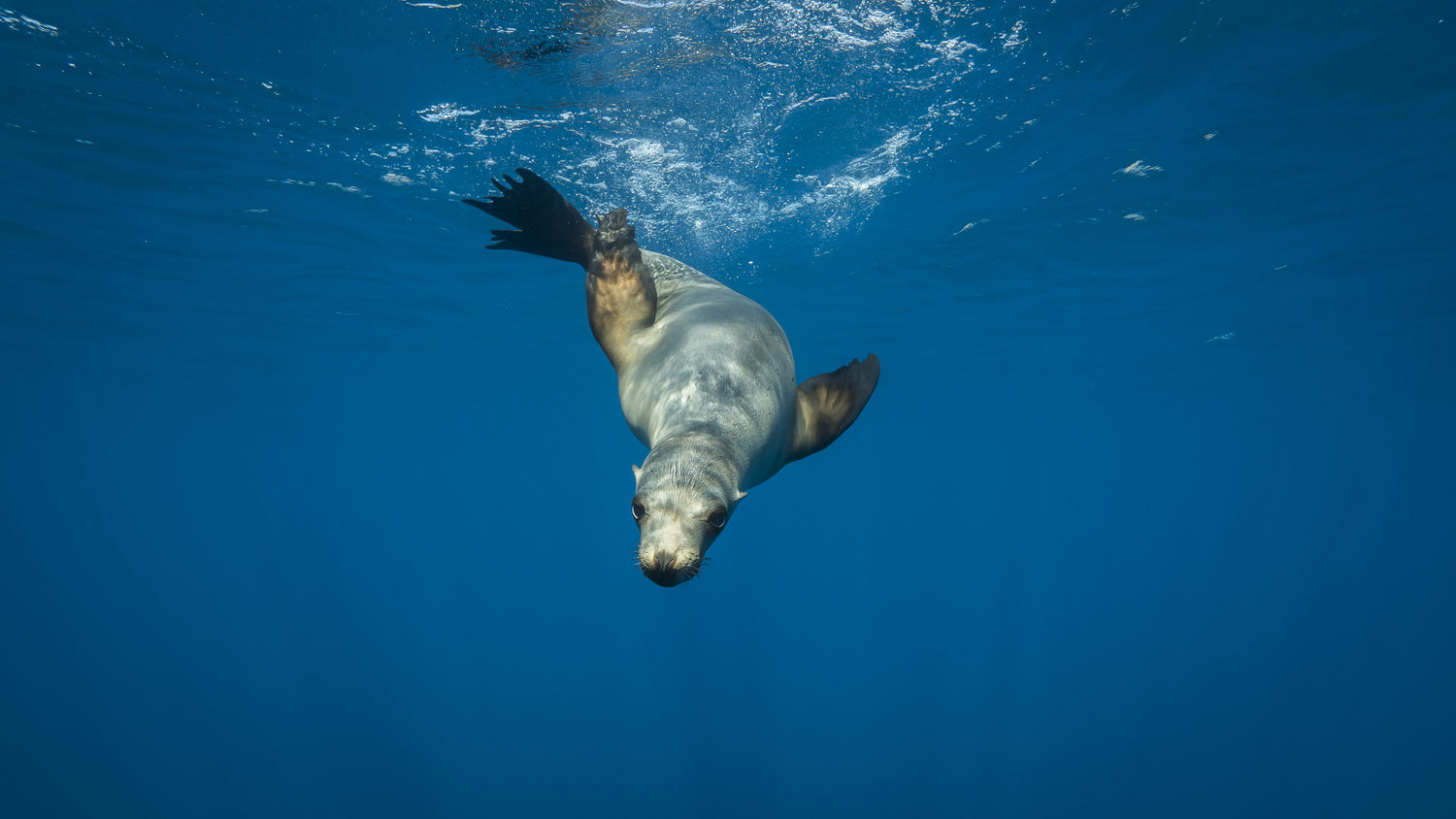Entanglement in fishing gear and other installations
Addressing the activities and threats
- Last updated | 31 July 2023
The entanglement of marine mammals, typically considered a type of bycatch, occurs when fishing gear (eg. ropes, buoys, nets, fish aggregating devices) and marine debris become wrapped around the animal, weighing it down or hampering its movement – often leading to the animal’s death, or serious welfare issues. Small cetaceans can also become entangled in fishing gear such as in gillnets or purse seines, which often leads to the animal drowning [1].

Although large whale entanglements gain the most publicity, entanglement can affect nearly all marine mammals, including whales, dolphins, pinnipeds and sirenians.
Entanglement can cause drowning, direct injury from ropes and cables, fatigue and starvation. Some species are more vulnerable than others due to morphology, life history and migration patterns. For example, humpback whales are vulnerable due to their long fins and movement near coasts [2]. Among some species, entanglement in fishing gear is a major cause of death [3].
Research suggests that over 300,000 cetaceans die annually from entanglement in fishing gear, although this should be considered extremely conservative, as most entanglements are not observed and/or reported [3]. Pinnipeds are particularly vulnerable to entanglement in marine debris, while dolphins and porpoise may become entangled in fishing nets, debris and aquaculture activities.
Some management strategies may involve the prohibition of certain activities, such as crab fisheries, aquaculture or commercial fishing within the MPA, or within key marine mammal areas within the MPA, or seasonal closures.
Where activities pose a risk, the use of less-threatening techniques, such as ‘rope-less trap’ technology or excluder devices for crab and lobster pots can be enforced or encouraged [4]. Rope-less fishing for crustaceans could result in clear benefits to cetaceans and other marine life, as in the absence of end lines in the water column, the risk of entanglement is virtually eliminated [5]. Acoustic deterrents and other strategies have been applied around installations such as aquaculture farms.
Public awareness campaigns directed at all marine users can focus on actions to prevent entanglement, such as using safer fishing practices, and response and reporting actions should an entangled marine mammal be found. All; reported entanglements (whether the animal is alive or dead) can then be entered into a database to be used in efforts to help reduce future entanglements.
When an entanglement occurs, formal, best-practice response strategies should be in place, with a reporting procedure, and trained responders available. In many cases, a national agency, such as NOAA, will be responsible for coordinating and training a network of responders [6].
Bycatch is the term given to the accidental capture of marine life in fishing gear. It is a global issue, affecting many different species including seals, turtles and sea birds as well as non-target fish species. It’s estimated that at least 500,000 cetaceans are caught in this way every year [7]. This equates to more than 800 whales, dolphins or porpoises each day, and explains why bycatch is now seen as by far the single most serious, direct threat to cetaceans. Bycatch of cetaceans occurs in all kinds of fishing operations: from large industrial to localised artisanal fisheries. The scale of the problem means effective mitigation is only possible if many different organisations, disciplines and stakeholder groups work together with the fishing community, and consideration is given to the social, economic and environmental aspects of the problem [1].
The IWC Commission has established the Bycatch Mitigation Initiative (BMI). The overall aim of the BMI is to raise awareness on the need for action on cetacean bycatch at both national and international levels and to promote the use of effective tools to understand and tackle the issue. To be fully effective the BMI will need to work closely with experts from multiple disciplines and other international frameworks and organisations which have established the mandate to manage fisheries.
Hector’s dolphin (Cephalorhynchus hectori), found only within New Zealand waters, is currently listed as endangered. In response to threats of entanglement and by-catch from fishing, the Banks Peninsula Marine Mammal Sanctuary was gazetted in 1988. Covering 413,000 ha, the sanctuary extends 12 nmi out to sea.
Within the sanctuary, there is a year-round ban on amateur set-net fishing, and seasonal set-netting restrictions are in place. While the survival rate within the sanctuary, this was considered insufficient to allow population recovery. Therefore, broader management actions were introduced across the majority of the species’ range, including a ban on gillnetting within 4nmi of the coast in some areas and 2 nmi of the coast in others. Other strategies have involved fishing awareness campaigns, changing fishing methods, and substantial research using compulsory reporting of entanglement and bycatch and encouragement to report sightings. Early indications of population recovery illustrate the frequent need to extend management beyond small and medium-sized MPAs, even for relatively sedentary coastal species.
[1] Web page: International Whaling Commission: Bycatch
[2]Web page: Ocean Wise – Entanglement poses a major threat to cetaceans worldwide
[3] Paper: Assessment of Management to Mitigate Anthropogenic Effects on Large Whales
[4] PDF: Hamilton, S., & Baker, G. B. (2019). Technical mitigation to reduce marine mammal bycatch and entanglement in commercial fishing gear: lessons learnt and future directions. Reviews in Fish Biology and Fisheries, 1-25
[5] Web page: Rope-less Fishing: A vision for how it can work
[6]Web page: Entanglement of Marine Life: Risks and Response
[7] PDF: FAO. 2021. Fishing operations. Guidelines to prevent and reduce bycatch of marine mammals in capture fisheries. FAO Technical Guidelines for Responsible Fisheries No.1, Suppl. 4. Rome.
If you would like to get in contact with us, please use the button below.
Copyright 2022 © All rights Reserved. Design by piknetart.com